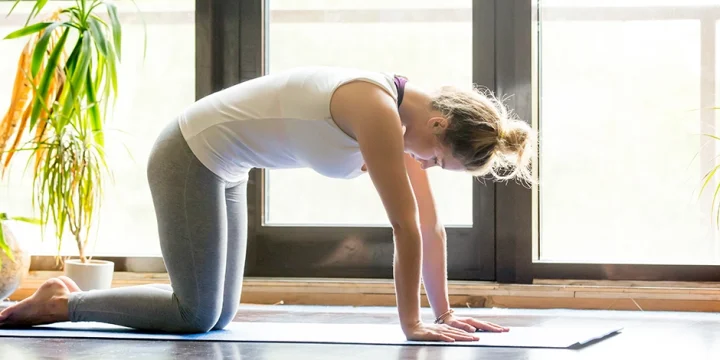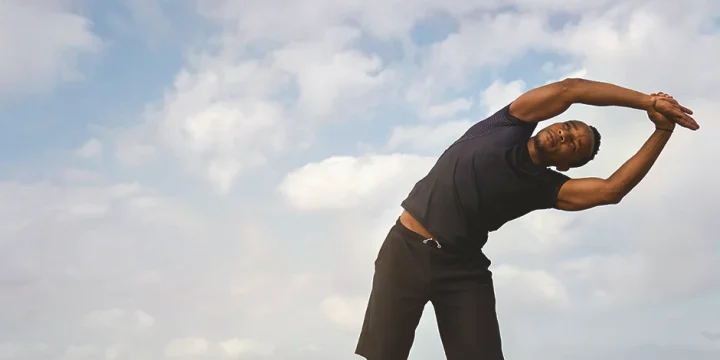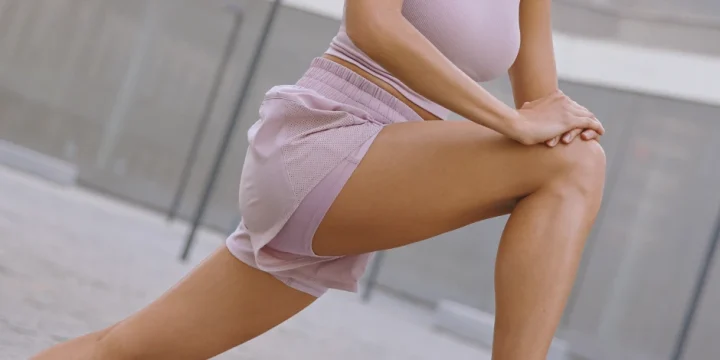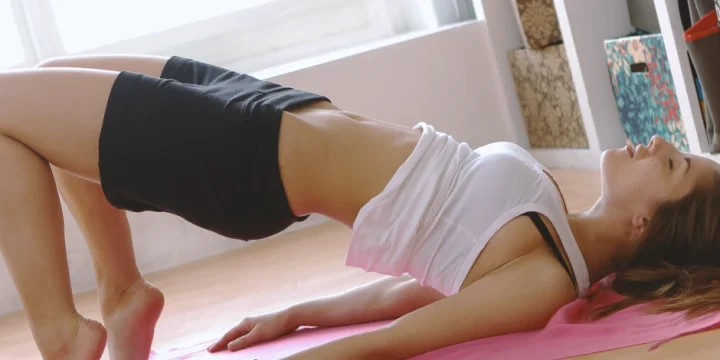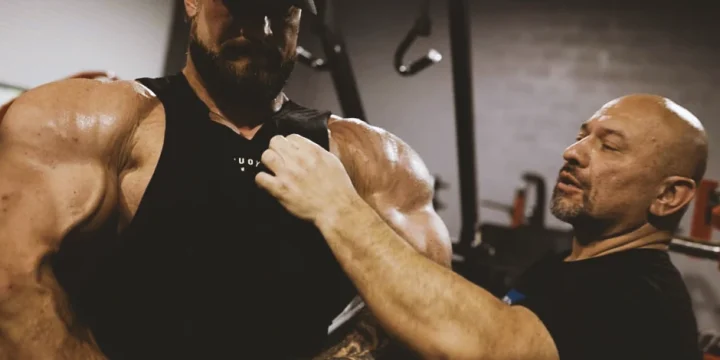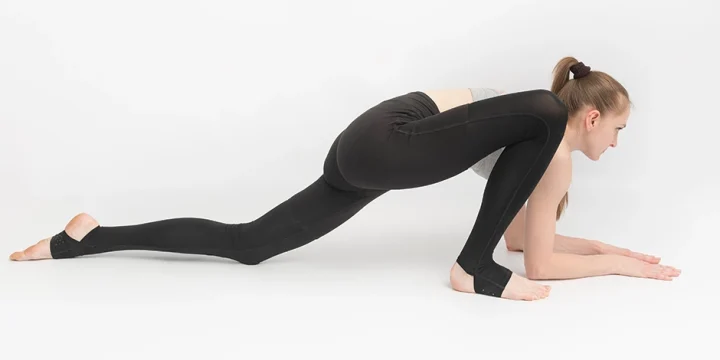The lying crossover stretch is possibly one of the easiest ways to improve flexibility in your hips while stretching your lower back muscles as well.
But as a personal fitness coach, I often see people make simple mistakes with this static stretch.
To help our readers and clients with the right movement, posture, and timing, we got the help of a physiotherapist.
In this post, we’ll show you exactly how to avoid mistakes and give you a tip on when this stretch can be particularly effective.
Quick Summary
- The floor crossover stretch is a great way to relieve muscle soreness from your glutes to your mid-back without having to get into a difficult yoga pose.
- It’s ideal for dealing with tight muscles after a tough workout, and you won’t have to worry about trying to keep your balance.
- The floor crossover stretch can improve your posture while sitting down, which might benefit people with a desk job.
- This stretch may also have neurological benefits, helping you reduce stress and anxiety.
How To Do The Lying Crossover Stretch

Let me now guide you through the right way to do this simple lying crossover stretch without hurting yourself:
- Step 1: Get into the starting position by lying down on an exercise mat with your arms stretched out at shoulder level.
- Step 2: Lift up your left leg and slowly rotate your hips until your left knee and foot are on the opposite side of your body.
- Step 3: Aim to get your left foot on the ground beside your right knee to add more stretch to your glutes.
- Step 4: Hold this stretch for a few seconds and make sure that your right leg remains straight with your toes pointing to the ceiling the whole time.
- Step 5: Don’t forget to switch sides and do the same movement in the opposite direction.
One variation of this is to place the crossed-over foot flat on the ground, which should result in a slightly different feeling in your glutes.
It’s also a good option for people who don’t quite have the flexibility yet to get their knee and foot on the ground next to the opposite knee.
What Muscles Does This Stretch Work?

The lying crossover stretch works multiple muscles, from the hip muscles to the buttocks and the lower back.
Here are some important details about these muscles that my physiotherapist shared:
- Glutes: These are the large muscles in your buttocks that are responsible for pelvic alignment and moving your legs [1].
- Obliques: These are the core muscles that run alongside your upper body, and they play a key role in your posture [2].
- Erector spinae: These long muscles run from your shoulders down to your lower back and support spine alignment [3].
- Hip Flexors: These are critical muscles for tilting your hips and lifting your legs up [4].
One mistake I’ve seen people make is that they try to make this movement dynamic to achieve a bit of a chest stretch as well.
However, because of the position you’re in, this could damage your back, and there are far better ways to stretch your chest muscles.
Related: Glute Stretches for Runners
What Are The Benefits?

Based on my experience and research, the benefits of doing mobility exercises like crossover stretches come down to reducing tight hips and back muscles.
And that will have three significant benefits.
1. Reduce Muscle Soreness
The hip-crossover stretch is a great way to reduce muscle soreness after a tough workout.
And because this back, glute, and lower chest stretch is done on the floor, it’s also a great way to cool down and lower your heart rate [5].
“Cooling down gives the person a few minutes to switch gears between what they were doing and what they are doing next, to reflect on the work they did, and build confidence and trust around their exercise routine.”
- Emilia Benton, Writer at wellandgood.com
2. Increased Range Of Motion
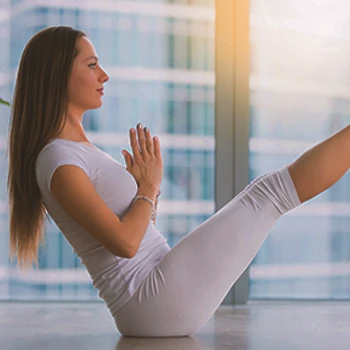
The crossover stretch will also help to improve the range of motion of your back and hips.
And that could significantly help with intense movements and heavy lifting.
I find it can have a great effect on workouts like squats or other variations that end up with knees bent as far as possible.
3. Improved Posture
And finally, doing a daily crossover stretch could be a great way for office workers who sit at a desk all day to improve a poor sitting posture.
Stretching those lower back muscles will also improve your spine health and remove common aches and pains [6].
4. Neurobiological Benefits
The lying-crossover stretch, like many other stretches, offers significant neurological benefits.
It can help reduce muscle tension, which is often a physical manifestation of stress. So, by engaging in this stretch, you can promote relaxation not just in your muscles but also in your mind.
According to an article from Colorado State University, the gentle pulling and elongation of muscles during the stretch send signals to the brain to release tension, leading to a state of calmness and reduced anxiety [7].
Incorporating Breathing Techniques Into Your Stretch
I’ve found that combining the lying crossover stretch with specific breathing techniques can be highly beneficial to maximize the effectiveness of the lying crossover stretch.
As you settle into the stretch, focus on taking deep, controlled breaths.
Inhale slowly through your nose, allowing your abdomen to expand, and then exhale gently through your mouth. This type of breathing helps to further relax the muscles and enhance the stretching effect.
FAQs
How Often Should You Do The Crossover Stretch?
You should do the crossover stretch multiple times a week. You could even do it daily if you sit at a desk for work, and I recommend that you aim to do it after tough upper body and back workouts.
Does Crossover Stretching Help Sciatic Pain?
Crossover stretching will probably not help with sciatic pain. And if you have this kind of nerve problem, it’s best to talk to a doctor or physio as some stretches could do more damage.
References:
- https://www.livescience.com/glute-muscles
- https://www.physio-pedia.com/External_Abdominal_Oblique
- https://www.spine-health.com/conditions/spine-anatomy/spinal-anatomy-and-back-pain
- https://www.americanhipinstitute.com/blog/hip-flexor-muscles-anatomy-33981.html
- https://www.wellandgood.com/why-do-we-need-cool-down-after-exercise/
- https://www.spine-health.com/wellness/exercise/stretching-back-pain-relief
- https://www.research.colostate.edu/healthyagingcenter/2021/06/23/the-simple-act-of-stretching/
About The Author
You May Also Like
